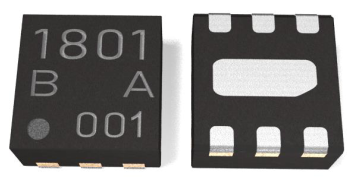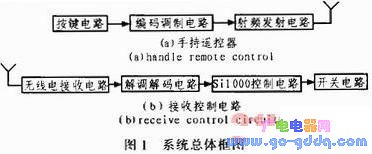簡介
Wireless switches, unlike their wired counterparts, operate without the need for physical connection lines. They utilize wireless communication technology to remotely control devices such as appliances and lights, transmitting signals wirelessly to toggle their states. Widely employed in households, offices, and industrial settings, wireless switches offer users a more convenient and flexible control method.
What are wireless switches?
Wireless switches are remote control devices based on wireless communication technology. Unlike traditional wired switches, they don't require physical connection lines to the controlled devices but rely on wireless signals for communication and control. Users can remotely operate appliances, lights, and other devices by sending commands through handheld remote controllers, smartphone apps, or other wireless devices. Wireless switches boast high flexibility, easy installation, and simple operation. They are not limited by distance, allowing for control anytime, anywhere, thus enhancing users' smart and convenient living experience.Advantages and disadvantages of wireless switches
2.1 Advantages
2.1.1 Flexible and convenient control: Wireless switches enable remote operation via wireless signals, allowing users to control devices anytime, anywhere without the need to be near the controlled devices, enhancing operational ease. Multiple control methods such as remote controllers and smartphone apps offer users a more flexible and convenient control experience.
2.1.2 Freedom in spatial layout: Without the need for physical wiring, wireless switches provide users with greater freedom in interior space layout. Users can install wireless switches in more convenient and reasonable locations, meeting personalized needs and achieving better space planning.
2.1.3 Compatibility and expandability: Wireless switches typically exhibit good compatibility and expandability. They can be combined with other smart home devices and automation systems to achieve inter-device linkage control. Users can expand their systems according to their needs, building a smarter and more convenient living environment.
2.2 Disadvantages
2.2.1 Signal interference may affect stability: Since wireless switches rely on wireless signals for communication, external interference may lead to signal instability. Factors such as electromagnetic interference and signal blocking may diminish the effectiveness of wireless switches. Therefore, environmental factors and signal stability need to be considered when using wireless switches.
2.2.2 Battery replacement or charging required: Most wireless switches require battery power or charging. Hence, users need to periodically replace batteries or ensure the normal operation of charging devices to maintain the normal operation of wireless switches. This may incur certain maintenance costs and operational considerations.
- Principles and functions of wireless switches
3.1 Principles
Wireless switches communicate between transmitters and receivers using wireless signals. When a user presses a button on the transmitter or sends a command, the transmitter converts the signal into a wireless radio frequency signal. These signals are transmitted to the receiver, where they are decoded and execute the corresponding actions, such as turning devices on or off. Wireless switches typically employ various wireless communication technologies, including infrared and radio frequency. Infrared wireless switches use infrared signals for remote control, suitable for short-distance control. Radio frequency wireless switches utilize radio frequency signals for communication, offering longer transmission distances and penetration capabilities.
3.2 Functions
Wireless switches play a significant role in households, offices, and industrial settings:
3.2.1 Household applications: In residential environments, wireless switches can control lights, televisions, audio systems, and other electrical devices. Users can easily operate various devices through remote controllers or smartphone apps, enhancing convenience and comfort. Moreover, wireless switches can be integrated with smart home systems to achieve automation control and scene mode settings, such as automatically turning on lights when approaching the entrance or turning off devices when leaving home.
3.2.2 Commercial and office applications: In commercial and office environments, wireless switches can be applied to building automation systems, conference room management, and security systems. Through wireless switches, users can conveniently control devices such as air conditioners, curtains, and projectors, improving office efficiency and comfort. Furthermore, wireless switches can be connected to smart building management systems to achieve energy management and security monitoring functions.
3.2.3 Industrial automation applications: In the industrial field, wireless switches are widely used in automation control systems. They can be used for remote control of mechanical equipment, start-stop functions of production lines, and safety protection. Leveraging wireless switches, factories can achieve remote monitoring and operation of equipment, improving production efficiency and safety.
Wireless switches, as switch devices without physical connections, enable remote control operations through wireless communication technology, offering users a more convenient and flexible control method. They play an important role in households, commercial spaces, offices, and industrial settings, enhancing convenience, intelligence, and safety in life and work. With the continuous development of wireless communication technology, wireless switches will continue to be widely used in various fields, bringing more innovative control experiences to users.
相關討論
推薦內容
高效電源架構,適用于智能門鎖,無電池燈開關和無線傳感器
開關電源之Buck變換器的環路分析與補償
自激振蕩開關電源電路構成特點及工作原理介紹
開關電源入門視頻(BUCK)
直播回放: ST 智能開關在工業自動化領域中的應用
直播回放: 節能減碳 - 用于光伏逆變器/儲能系統的歐姆龍繼電器?開關?連接器解決方案
直播回放: ADI 開關/多路復用器系列產品的典型應用
模擬世界的最重要構成 - 信號鏈與電源:DC/DC 開關穩壓器
PI KOL: 從零開始,設計一款靠譜的開關電源
直播回放: ADI - 開關電源中的噪聲產生及如何減小電源噪聲
直播回放: MPS 電感解決方案,助力更好的開關電源設計
開關電源設計技術與應用實例
直播回放 : 邁來芯高可靠可編程霍爾開關
DC / DC 開關穩壓器封裝創新
如何使用開關型充電器設計安全可靠、有長待機時間、且由微型電池供電的產品
直播回放: TI 全新CC2340無線 MCU,助力低功耗藍牙應用
無線電編碼遙控4級調光燈開關
開關量模擬量無線遠程控制采集器模塊
無線電編碼遙控4級調光燈開關.rar
四路無線遙控開關的工作原理詳解
基于wifi及lora無線射頻技術實現遠程模擬量信號0~5v,0-10v,0~20ma,4-20ma采集輸出以及開關量的輸入輸出
基于wifi無線PLC遠程控制實現io開關量信號遠程采集傳輸技術
無線開關量測控模塊
FES8802系列無線模塊手冊_智能開關
單火線取電無線遙控開關整機電路原理圖參考
1路無線遙控開關的制作.pdf
無線數碼遙控開關.rar
泉州加多寶生產線機械手無線開關量控制方案
4路無線遙控開關電路圖與工作原理
用于汽車無線電和信息娛樂系統的8V開關電源
86型家用無線遙控開關程序源代碼
一個手機版本開關無線網絡的程序







